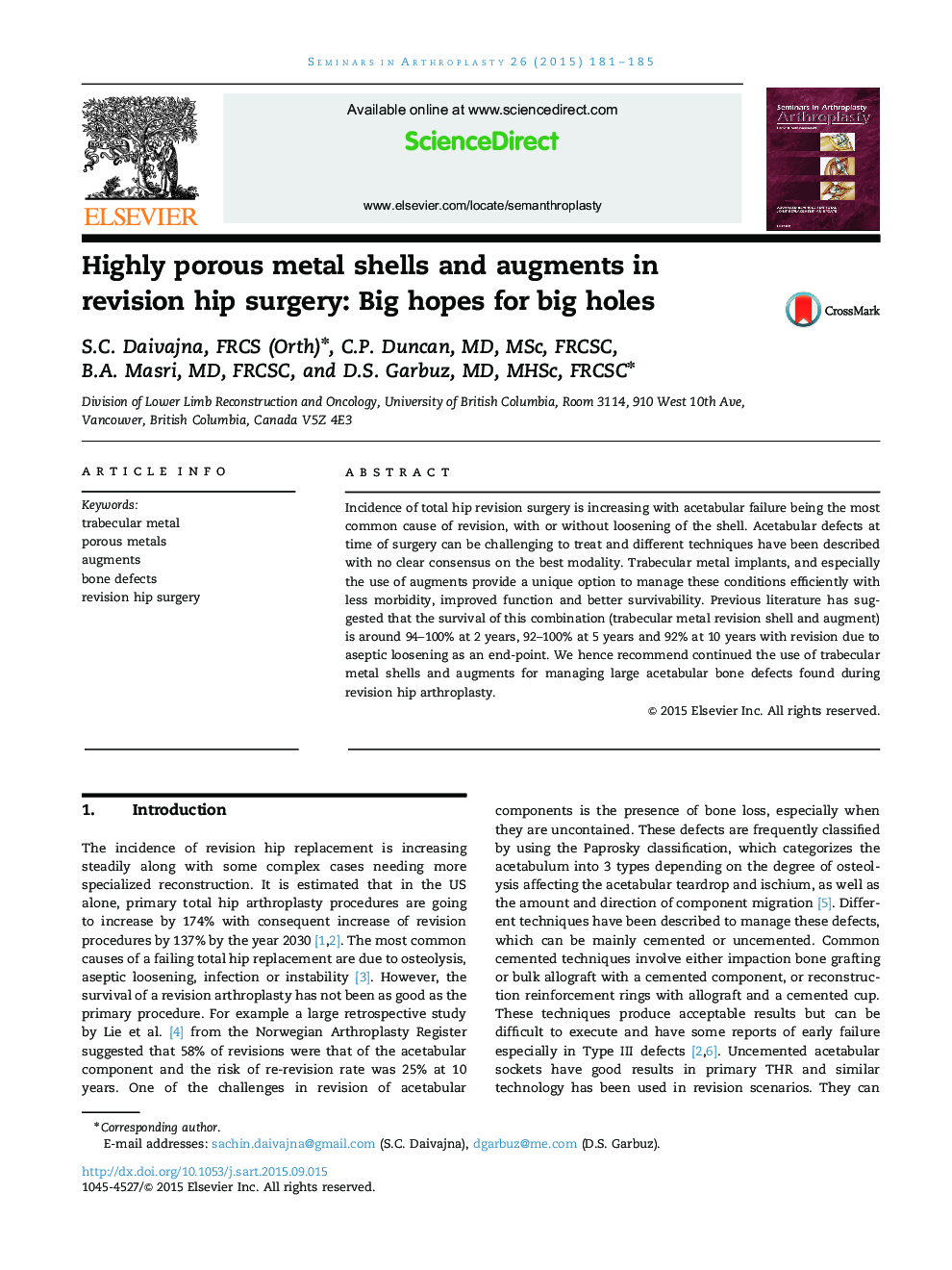| Article ID | Journal | Published Year | Pages | File Type |
|---|---|---|---|---|
| 4093748 | Seminars in Arthroplasty | 2015 | 5 Pages |
Incidence of total hip revision surgery is increasing with acetabular failure being the most common cause of revision, with or without loosening of the shell. Acetabular defects at time of surgery can be challenging to treat and different techniques have been described with no clear consensus on the best modality. Trabecular metal implants, and especially the use of augments provide a unique option to manage these conditions efficiently with less morbidity, improved function and better survivability. Previous literature has suggested that the survival of this combination (trabecular metal revision shell and augment) is around 94–100% at 2 years, 92–100% at 5 years and 92% at 10 years with revision due to aseptic loosening as an end-point. We hence recommend continued the use of trabecular metal shells and augments for managing large acetabular bone defects found during revision hip arthroplasty.
